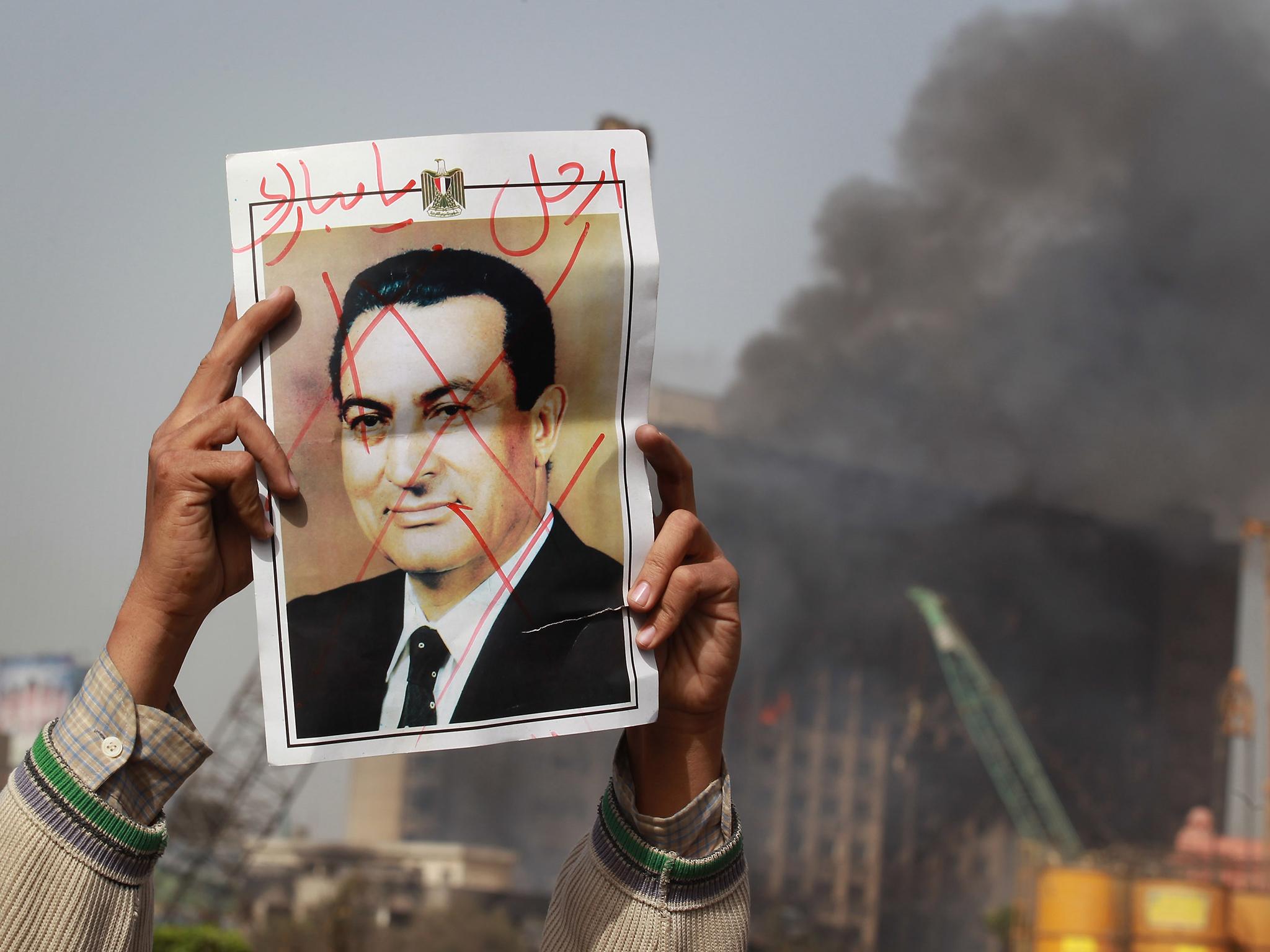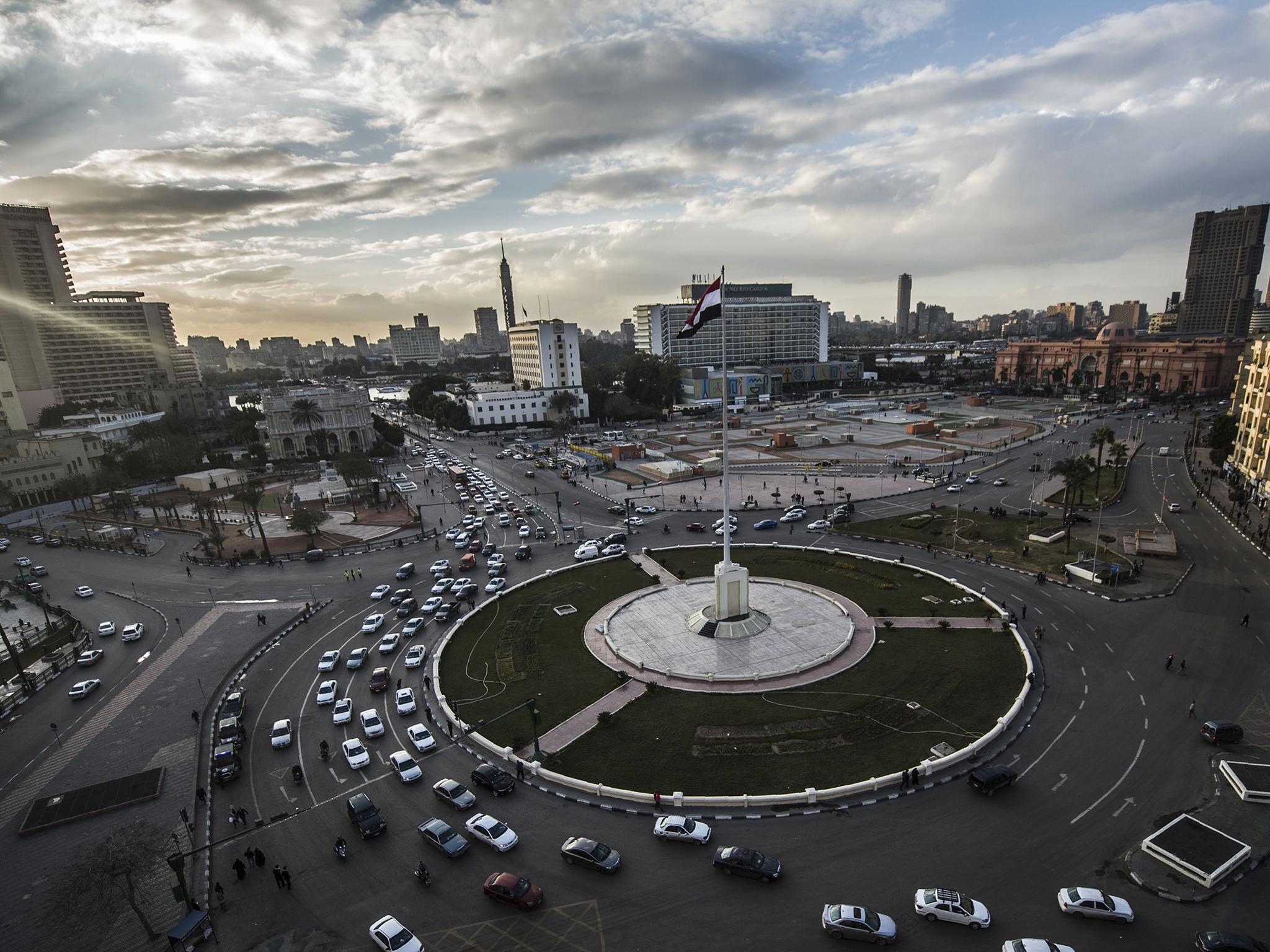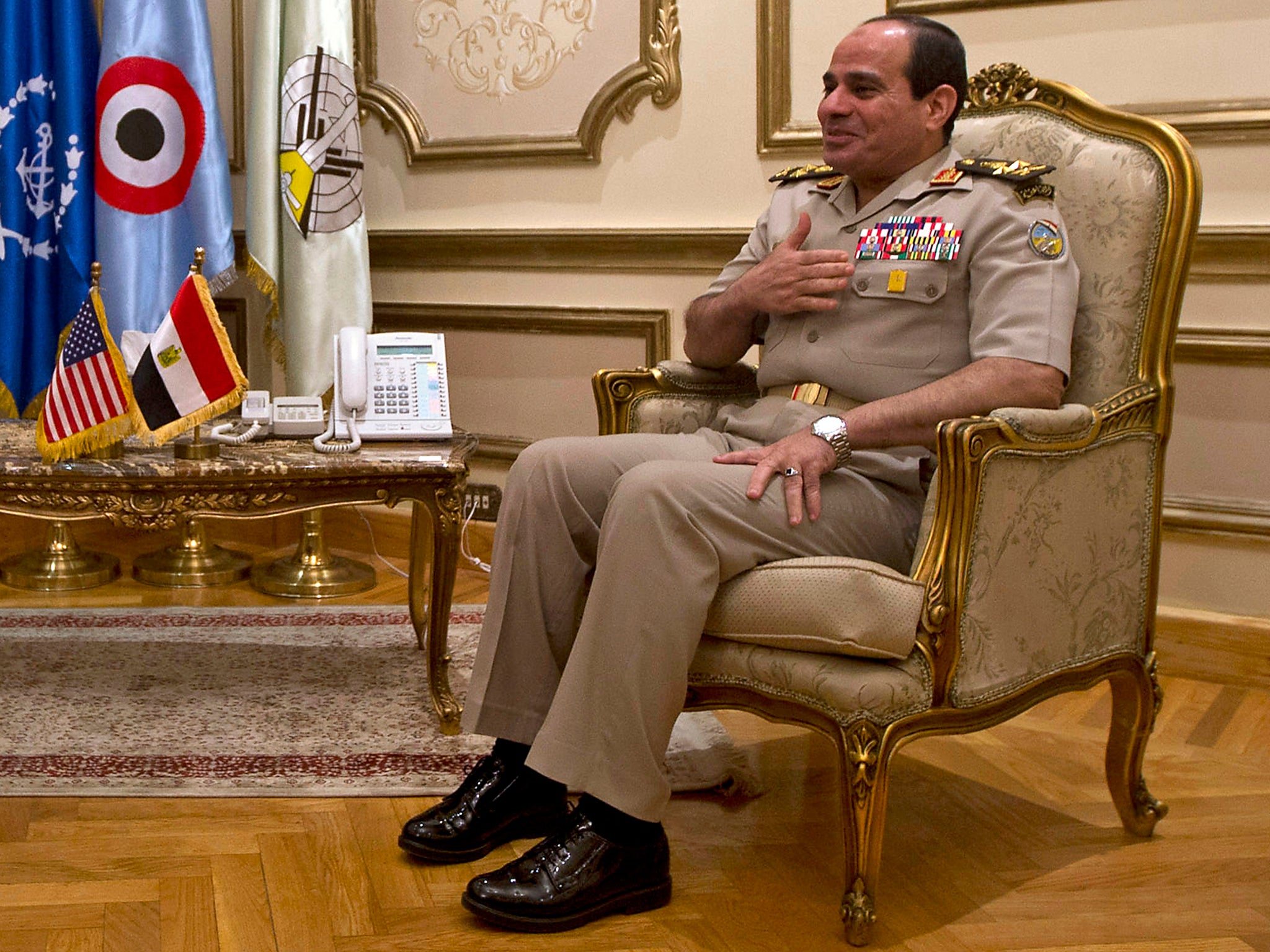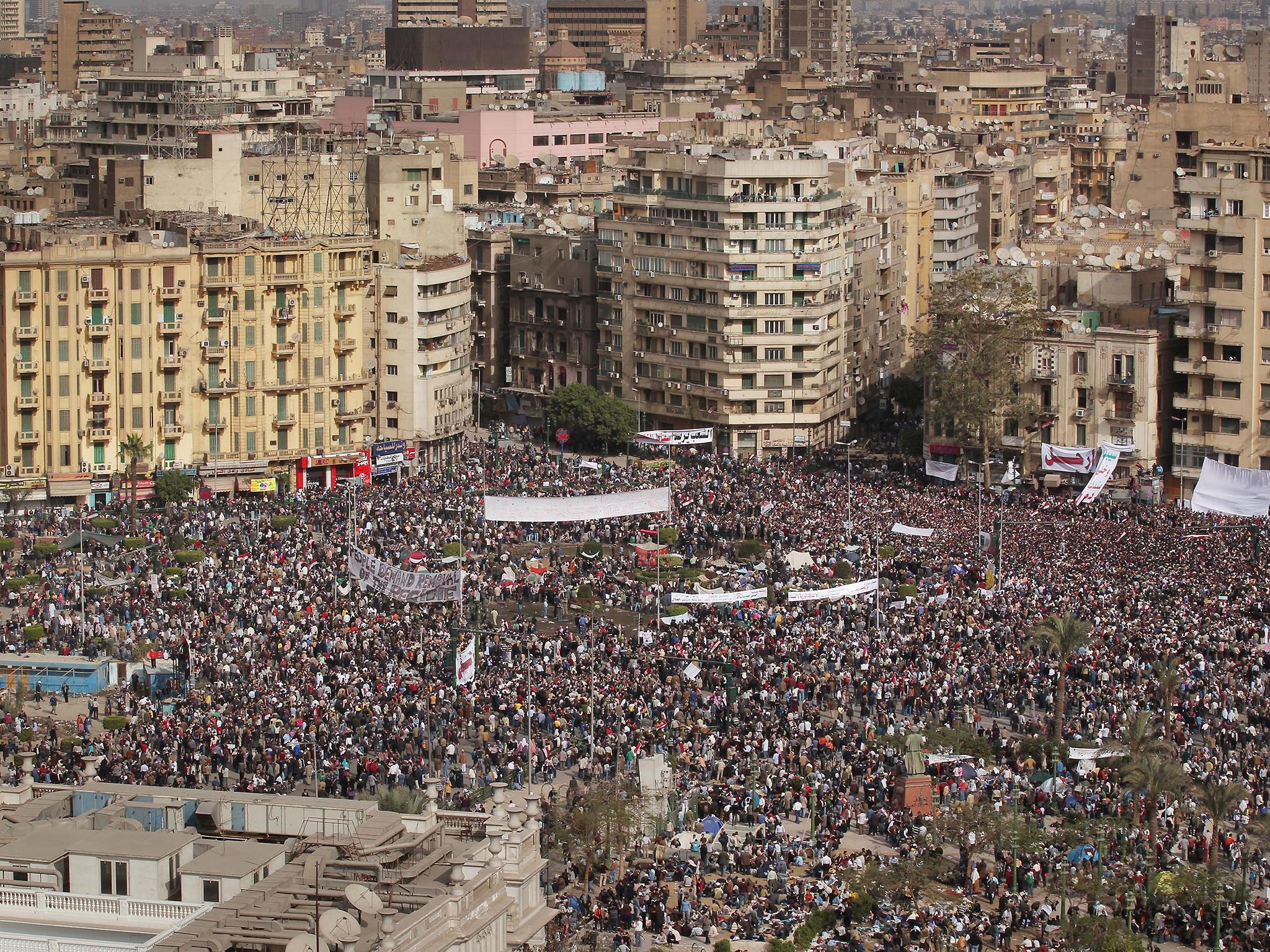Six years on from the Arab Spring, revolution lingers in the Egyptian air
The desire for change has been planted in the consciousness of ordinary Egyptians. The conditions that bred the uprisings are brewing again and the prospect of a second Arab Spring (rebooted 2.1) is in the offing. Youssef El-Gingihy charts the causes, events and fallout of January 2011

Your support helps us to tell the story
From reproductive rights to climate change to Big Tech, The Independent is on the ground when the story is developing. Whether it's investigating the financials of Elon Musk's pro-Trump PAC or producing our latest documentary, 'The A Word', which shines a light on the American women fighting for reproductive rights, we know how important it is to parse out the facts from the messaging.
At such a critical moment in US history, we need reporters on the ground. Your donation allows us to keep sending journalists to speak to both sides of the story.
The Independent is trusted by Americans across the entire political spectrum. And unlike many other quality news outlets, we choose not to lock Americans out of our reporting and analysis with paywalls. We believe quality journalism should be available to everyone, paid for by those who can afford it.
Your support makes all the difference.At the 2015 Sharm el-Sheikh Egyptian Economic Development conference, it was announced that a new Egyptian capital city would be built in the desert to the east of Cairo. The new capital is conceived as an epic project of gargantuan proportions – 12 times the size of Manhattan, 7 times larger than Paris with an envisaged population of 7 million. It will have an airport larger than Heathrow and a theme park four times the size of Disneyland. There will be 10,000 km of pedestrian-friendly streets with solar farms and electric trains.
The official website has an impressive corporate slick sheen describing the new capital as “a catalyst for Egyptian renaissance”. It all sounds like a utopian vision of a 21st-century mega-city; an architects’ paradise of urban design – a smart city with innovation hubs powered by a green economy and ecologically sustainable living. But for the many Cairenes living in poverty, this pioneering project sounds like a cruel joke. The grim reality of contemporary Cairo is that many are living in destitute slums, including “The City of the Dead” where millions live among the catacombs of cemeteries.
Scratching below the surface would reveal another side to the project. The financing and construction of the new capital was originally to be undertaken by United Arab Emirates real estate investment firm Capital City Partners, renowned for the Burj Al Arab tower in Dubai. Would this be a public-private partnership in keeping with Donald Trump’s planned programme of infrastructure or the City of London model exported globally? The UK’s Public-Private Partnership (essentially Private Finance Initiative) debt currently stands at over £300bn. Egypt’s investment minister Ashraf Salman was quoted as saying that “the government will incur zero cost in the city, and this will be totally developed, master planned and executed” by the private sector.
Critics pointed out that housing in the new city would be well beyond the reach of ordinary Egyptians and that the main beneficiaries would be corporate consortia and private investors making exceedingly healthy returns. In an unexpected turn, the original contract has been cancelled and Chinese investors have stepped in, while the project has been plagued by recurrent rumours that construction may not even go ahead.
The Sharm el-Sheikh conference was itself emblematic of the unbroken continuity of neoliberalism in post-2011 Egypt. International Monetary Fund (IMF) bail-outs have, as per usual, come with strings attached. A massive programme of privatisation is in progress, attractive to international investors with tax cuts and deregulation proceeding apace. The conference saw heavy representation from Western and Gulf allies anxious to prevent further disruption to their interests. It was produced by global PR and consultancy firms. Tony Blair – who has advised President Sisi – was a keynote speaker while Lazard – the financial consultancy – is advising Sisi on economic policy.

Since the overthrow of King Farouk in 1952, Egypt has been ruled by a series of military leaders. The first of these – Gamal Abdel Nasser – was a charismatic exponent of Arab socialism and nationalism while maintaining an iron grip on the country. In 1956, Nasser nationalised the Suez Canal, resulting in the Soviet Union coming to his rescue against the tripartite intervention of Britain, France and Israel. The Suez Crisis represented a stunning victory for the Pan Arab cause against imperialism and Nasser was feted as a talismanic hero for the spread of decolonisation. He would remain a thorn in the side of Western interests right until his death in 1970.
His successor Anwar Sadat (arguably an early practitioner of the Third Way) would usher in a new era, signalling apparent continuity with Nasserite policies while moving away from Arab socialism to accommodate Western powers. The Camp David agreement was brokered in 1978 between Egypt and Israel under the aegis of President Carter. This was perceived in some quarters as a betrayal of the Arab cause and Sadat was assassinated by Islamists in 1981.
Sadat’s deputy Hosni Mubarak would oversee Egypt become the lynchpin of US geopolitical hegemony in the Middle East. Hence, Egypt is currently the second largest recipient (after Israel) of US military and economic assistance. US annual military aid is $1.3bn alone and the US and Egyptian militaries carry out joint special exercises.
Mubarak would also preside over the neoliberal turn with similar effects to those seen across the world – rising inequality, greater extreme poverty, the demise of social justice accompanied by the emergence of a new super-rich class engaged in widescale corruption. Mubarak maintained his dictatorship through the much feared Mukhabarat (General Intelligence Directorate) and the systematic torture and imprisonment of thousands of political dissidents. This included assistance with the CIA’s infamous extraordinary rendition programme.

The 2008 global financial crisis led to high unemployment alongside soaring food and commodity prices, precipitating social unrest across the region and culminating in what would be christened the “Arab Spring” in 2011. Three decades of the nepotism and cronyism of Mubarak – 82 years of age at the time – had finally taken its toll.
A Tunisian street vendor, Mohammed Bouazizzi, set himself on fire and this proved to be the spark for conflagration across the Middle East. Back in 2011, the millions gathering in Tahrir Square (Liberation Square) chanted: “El Shaab yureed eskaat el nazaam” (“The people demand the downfall of the regime”). Ramy Essam, the singer-songwriter of the revolution, who himself would eventually be captured and tortured, performed his song “Irhal!” (“Leave!”) to the rapturous Tahrir crowds.
Julian Assange and Wikileaks attempted to claim some credit for this remarkable chain of events. The revelations of leaked US diplomatic cables – dubbed Cablegate – certainly confirmed what the Arab street long suspected; that the ruling class of strong men and tinpot dictators had enabled the rapacious looting of their countries while lining their pockets. The likes of Ben Ali in Tunisia and Mubarak had siphoned off untold riches. The galvanising effect of social media networks was undoubtedly a catalyst under repressive regimes with state-controlled propaganda.
The Obama administration eventually urged Mubarak to step down. On 11 February, Omar Suleiman – head of the Mukhabarat – announced the previously unthinkable: Mubarak would resign with immediate effect. This decapitation had the desired outcome, with the Tahrir Square crowds dispersing.
The Obama move to push Mubarak was interpreted in the Western media as a response to the will of the Arab street while the abandonment of a long-serving US ally was met with dismay by Saudi Arabia. In reality, this is characteristic of US policy regarding client states. Mubarak could no longer serve his purpose and his decapitation was actually designed to stymie further escalation of the revolution.

At the same time that the revolution was in full throng, Sami Enan – effectively the number two in the military high command as the Chief of the General Staff of the Armed Forces – was reported in meetings at the Pentagon discussing the future of Egypt. In fact, according to The New York Times, the Pentagon maintained daily contact with the new military rulers over a period of months. Egypt is seen by the US as a crucial cog in the maintenance of geopolitical hegemony over the Middle East.
The crowds had called for the downfall of the regime yet Mubarak’s departure left the regime essentially intact. The lack of organisation of this new political movement had been brutally exposed in keeping with similar horizontalist movements across the world from the so-called coloured revolutions to the likes of Occupy. Had this nascent movement been organised, the alternative trajectory would have been taking control of the organs of state.
The region was already starting to look unrecognisable. Ben Ali of Tunisia and Mubarak of Egypt had been ousted in the space of a few weeks. The Arab Spring had spread to Libya and Syria with anti-Gaddafi and anti-Assad uprisings. The counter-revolution would duly gather pace backed by regional and Western powers concerned that the chain of events had the potential to destabilise the entire Middle East. The Gulf regimes were particularly concerned that they might be next.
The 2011 Nato intervention in Libya led to the overthrow of Gaddafi, turning the country into a “Hobbesian” state of anarchic chaos in which Isis has run amok. The disintegration of the Libyan state has seen arms and weapons scattered across the region and helped precipitate the migrant crisis. Wikileaks emails revealed that Secretary of State Hillary Clinton overrode the Pentagon’s warnings of this nightmarish scenario.
While Saudi Arabia, Turkey and Qatar armed and supported Islamist rebels in Syria in an effort to topple Assad and at the same time suppress progressive, secular rebellion, the result has been a protracted civil war of unrelenting barbarism and brutality. The CIA facilitated this process, leading to splits with the Defence Department over strategy. The Defence Intelligence Agency (DIA) even anticipated that destabilisation of Assad would lead to the rise of Isis.

In Egypt, the Supreme Council of the Armed Forces (SCAF) took over as a caretaker government. In 2012, the Muslim Brotherhood won elections with President Morsi elected. However, within a year – in the summer of 2013 – millions returned to Tahrir Square in the form of the Tamarod movement. The military leadership deposed Morsi and the Brotherhood, justifying this intervention on the basis that they were merely facilitating the desire of the people and, at the same time, guaranteeing peaceful stability and national unity. To the outside world, however, this was viewed as an orchestrated military coup overthrowing a democratic civilian government.
Six years on from the start of the Arab Spring, there can be no disputing that the deep state has effectively reasserted itself and is very much in control. General Abdel Fattah el-Sisi was elected as the new leader and his regime has adopted the rhetoric of the revolution. It legitimises its authoritarian conservative rule on the basis of maintaining the integrity of the nation state from external Islamist subversion while suppressing all dissent.
One reading of this narrative is that the Egyptian revolution has failed. The slogans of the revolution – bread, freedom and social justice – have not been answered. Yet as Jack Shenker, author of The Egyptians: A Radical Story, points out, there are grounds for optimism rather than pessimism. The revolution has extended beyond Tahrir, permeating every aspect of society from workers demanding the takeover of textile factories to school children re-enacting the dialectic of revolution and counter-revolution in the playground. It can be seen in the revolutionary graffiti adorning buildings and the radical politics of DJ anthems.
The desire for change has been planted in the consciousness of ordinary Egyptians. The conditions that bred the uprisings are brewing again and the prospect of a second Arab Spring (rebooted 2.1) is in the offing. Shenker compares what has been happening in the Middle East since 2011 to the series of revolutions in 1840s Europe – a process that will take decades to unfold but from which there is no going back. The road to democratic rule may be long and winding but it is ultimately irreversible. The latest wave of revolutions can also be viewed as a continuation of previous ones extending back at least to 1919 when the Egyptians rebelled against the British Empire. Gandhi said he had learnt from the example of 1919.

The renowned novelist Alaa Al Aswany – author of the best-selling novel The Yacoubian Building, in which the eponymous building stood as a metaphor for the fault-lines of contemporary Egypt – once wrote of a conversation with Gamal Mubarak (the son of President Hosni Mubarak). They had discussed the prospects for democracy in Egypt only to wake up and find that it had all just been a dream. The 2011 uprisings have been the midwife to the painful and protracted process of translating that dream into reality. None of the Arab rulers will be sleeping easy in this age of turbulence and turmoil, for they know that the prospect of revolution is always just round the corner. The heady days of 2011 (and 2013) could erupt again next week, next month or next year.
The Trump presidency appears to signal the curtain coming down on the age of liberal democracy. Authoritarian rule has spread into Turkey and Eastern Europe with France, Germany and Holland confronting the wave of populism. It is worth noting that Sisi was apparently the first international leader to congratulate Trump on his victory.
The fate of the Egyptian and Arab revolutions may yet dictate what happens elsewhere, with events in the strategically critical region of the Middle East having potential repercussions for the wider world. There are lessons for all of us here and the young Egyptian revolutionaries can only inspire their compatriots across the globe.
Youssef El-Gingihy is the author of How to Dismantle the NHS in 10 Easy Steps, published by Zero books
Join our commenting forum
Join thought-provoking conversations, follow other Independent readers and see their replies
Comments